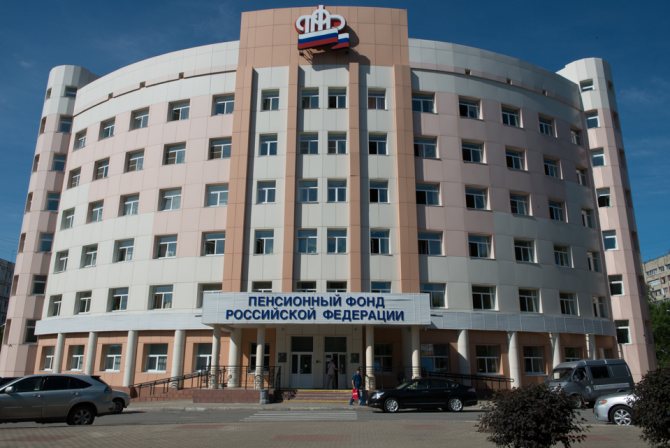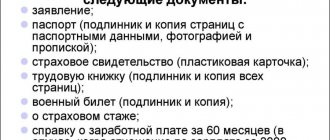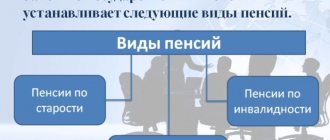Not everyone today knows how to apply for a disability pension and what needs to be done for this. But both the disabled person himself and his guardians or trustees can receive money. To do this, you need to provide a complete package of documents and indicate the details for receiving funds. It is worth considering in more detail who, how and on what grounds can receive a disability pension.
How to apply for a disability pension
How are disability groups assigned?
According to the law, a disabled person is a citizen with permanent health impairments. At the same time, the condition provokes restrictions in various areas, so that their owner often needs help with self-care, etc.
At the moment, a disabled person is assigned one of three groups, taking into account the complexity of the problem. But the status is established only within the framework of a medical examination (MEC), where doctors assess the degree of limitations of the person being examined, focusing on the gradation of development of the anomaly, study the documentation and make a final decision.
Table 1. Disability groups
| Group | Membership criteria |
| First | The patient cannot take care of himself; he requires special means and medications to fight for life. Benefits are provided to the disabled person and his guardian or trustee. |
| Second | Self-service requires special items that will help a person. At the same time, independent movement around the house is often carried out with virtually no problems. However, it is impossible on the street due to the lack of an appropriate environment. |
| Third | This is a working group that involves only a few restrictions and additional benefits. |
If a disabled person is given group 2 or 3, he will need to undergo a commission and confirm the group every year. In group 1, you can be examined every few years. During the next health check, doctors leave the group, lower it, remove it, or give it indefinitely.
For what period is disability assigned?
Each patient is assigned a personal rehabilitation program, after which, theoretically, his condition should improve. Therefore, patients need to undergo regular re-examination to confirm and extend the group: disabled people of the first group are re-examined every two years, and the second and third groups - annually.
Permanent disability, for which re-examination is not required, is established in the following cases:
- if the disabled person is an age pensioner;
- if over the past 15 years the disability group has not changed and was confirmed annually, or if the assigned group was replaced with a more severe one;
- if the patient is diagnosed with a diagnosis that cannot be treated in the present and future tense, and which does not give him the opportunity to fully live and work, a list of diagnoses has been established and approved by the Ministry of Health of the Russian Federation;
- if the first disability group was confirmed within five years.
What is the pension for disabled people in 2020?
Pension payments differ in amounts according to the assigned group, length of service and number of dependents and are subject to indexation simultaneously with other pensioners.
Table 2. Insurance pension for disabled people in 2020
| Category of pension recipients | The amount of a fixed payment to the disability insurance pension, taking into account increases to it |
| Disabled people of group I | Without dependents - 11,372.50 rubles per month With 1 dependent - 13,267.92 rubles per month With 2 dependents - 15,163.34 rubles per month With 3 dependents - 17,058.76 rubles per month |
| Disabled people of group II | Without dependents - 5686.25 rubles per month With 1 dependent - 7581.67 rubles per month With 2 dependents - 9477.09 rubles per month With 3 dependents - 11372.51 rubles per month |
| Disabled people of group III | Without dependents - 2843.13 rubles per month With 1 dependent - 4738.55 rubles per month With 2 dependents - 6633.97 rubles per month With 3 dependents - 8529.39 rubles per month |
Table 3. Social pension for disabled people in 2020
| Category of pension recipients | Pension amount |
| 5606.15 rubles per month |
| 13454.64 rubles per month |
| 11212.36 rubles per month |
| 4765.27 rubles per month |
Important
! The indicated payments, which are relevant for disabled adults, do not take into account the regional coefficient.
In addition to the pension, disabled people are paid a special monthly allowance - EDV:
- for group 1 – RUB 3,896;
- for group 2 – 2,782 rubles;
- for group 3 – 2,227 rubles;
- for disabled children – 2,782 rubles.
Important
! Disabled children receive a pension from birth.
In general, all disabled people are entitled to a pension according to their status and degree of limitations (group); only for minors, payments and benefits are processed by their parents or guardians.
How to set the payout amount?
The formula for calculating the insurance pension is established by law and is calculated according to the following data:

Simultaneously with the assignment of the pension, a fixed payment is also deducted. For group III it is equal to 2,667.10 rubles.
For non-working citizens with no work experience, the size of the social pension is strictly fixed by law and is set at 4,491.30 rubles. per month. This amount is indexed annually.
Types of disability pensions
Now let’s look at the existing types of pension accruals and talk about their differences.
Disability insurance pension
This payment is guaranteed by the Federal Law “On Social Protection of Persons with Disabilities...” in the following cases:
— whether a citizen with disabilities has a work history;
— establishing a disability group based on the results of the ITU;
— receiving special status not because of harming oneself or committing an action punishable by law.
This payment is not available to persons who are not adults. Another feature: the labor (insurance) pension is paid regardless of the number of days worked by the disabled person for the entire time until his status is removed or he reaches retirement age.
The average labor pension in the country is 11,800 rubles.
Social disability pension
This type of accrual is provided to a person with a disability in the absence of any work experience. Social pensions are paid to people with disabilities since childhood and to minors with disabilities. The monthly amount is approximately 9,700 rubles throughout the country.
State disability pension
You can count on this payment:
— astronauts;
— employees of the Ministry of Emergency Situations;
— military personnel;
— holders of state insignia;
— liquidators of man-made disasters.
Please note that limiting conditions (illness, injury, disfigurement) that led to the establishment of disability must be acquired during the performance of duties (service, etc.).
Currently, the state pension for military personnel reaches about 20,000 rubles, and liquidators of man-made accidents receive 13,000 rubles. In addition, the category under consideration includes disabled people from the Second World War, although they are separate from the above-mentioned beneficiaries. They are entitled to almost 25,000 rubles, and residents of besieged Leningrad - approximately 23,000 rubles.
Important
! According to the Pension Fund of Russia, almost 7,000 people simultaneously receive several types of pension payments - labor and social.
Comments (12)
Showing 12 of 12
- Valery 06/23/2016 at 19:52
I have 19 years of work experience and, being a disabled person of the second group, I have been receiving a disability pension for 8 years. Next year I turn 60 and will be transferred to an old age pension, the amount of which will be significantly less than my current pension. It turns out that when I reach retirement age, the size of my pension will decrease?answer
- Sergey 06/24/2016 at 11:15
Indeed, upon reaching the generally established retirement age, 60/55 years for men and women, respectively, disabled pensioners are transferred to an old-age pension. However, the amount of the newly established payment cannot be less than that previously paid for disability.
If the old-age pension turns out to be less, then you will be given an additional payment and the amount of the pension will remain at the same level as it was before.
answer
I am a pensioner and receive a work pension. The attending physician refers me to the ITU commission to establish a disability group. How will this affect the amount of my pension and will I be entitled to two pensions at the same time?
answer
Sergey 07/16/2016 at 11:54
If disability is established for a person receiving an insurance (former labor) pension, then a second disability pension will not be assigned.
The categories of persons entitled to receive two pensions simultaneously are determined by the current pension legislation. These include disabled WWII participants and persons diagnosed with disability due to war trauma.
Once disability is established, you will receive the right to a monthly cash payment, which you can receive both in the form of monetary compensation and in the form of services in kind.
answer
I am from Nizhny Novgorod, a labor veteran and receive a labor pension taking into account benefits for labor veterans of Nizhny Novgorod (506 rubles + EDC for housing and communal services and electricity consumption).
I will turn 70 years old on November 25, 2020. I was given group 3 disability. What payments will I have?
answer
- Sergey 10/17/2016 at 13:16
In addition to the existing payments and compensations, after the disability group was established, you should (or will) be assigned a monthly cash payment in the amount of 1919.3 rubles . To establish it, you need to contact the territorial bodies of the Pension Fund.
answer
For what period of work is a 2-NDFL salary certificate required when applying for a disability pension?
answer
- Afonin Andrey Leonidovich 12/20/2017 at 10:43
For what period is a 2-NDFL salary certificate required when applying for a disability pension?
answer
I came to the MFC to re-register the group from 1st to 2nd group. They tell me to bring the last month's rent for utilities and a certificate of ownership of the apartment, and also a plastic card for travel. I don’t understand why they need this, documents for the apartment and the fact that I pay utilities for it?
answer
Incompetent information. The Pension Fund of Russia is not the only organization that provides disability pensions. In addition to the Pension Fund, disability pensions are awarded by the pension services of numerous law enforcement agencies - the Ministry of Internal Affairs, the Federal Penitentiary Service and others.
answer
Good evening. My sister fell ill with schizophrenia, but for 2 years she has been trying to continue working as a programmer. She can't cope with her job and gets fired all the time. What is needed to apply for a pension due to disability?
answer
Hello. I was assigned disability group 3. I continue to work officially. Please tell me which one is better for me to choose - a social or insurance pension so that I can receive a better pension? And if I still choose insurance, will there be any extra charges or indexation? And if they pay me below the subsistence level, will they be able to raise me to the subsistence level, even though I work? Thank you very much in advance.
answer
Share your opinionCancel reply
Additional benefits for people with disabilities
Beneficiaries can receive certain preferences provided by law, according to their group and some specific nuances. We reveal the main features below.
Benefits for group 3
In this case, you can take advantage of the following:
— discounts on medicines (for the unemployed);
— benefits when purchasing special shoes;
- free travel on public transport, as well as one free intercity travel.
Benefits for group 2
In this category, disabled people are provided free of charge:
— travel to the place of treatment;
— prosthetic arms or legs;
— vouchers for health improvement in sanatoriums;
- vital medications prescribed by a doctor.
In addition, if a group 2 beneficiary works, the law allows him to increase his vacation to 60 days a year and work fewer hours a week for the same salary as other employees.
Benefits for group 1
The first group, as the heaviest, gives the most advantages, namely:
— free dental prosthetics;
- prescription medications;
— vouchers for sanatorium-resort treatment;
— up to 50% discount on specialized equipment;
— free travel to the place of treatment and back (also for accompanying persons).
Important
! In some regions, from budget funds it is possible to reimburse expenses incurred when purchasing special devices, special furniture, etc. Parents or guardians caring for disabled children of school age are given compensation for the purchase of uniforms, school supplies, etc. (they are also entitled to benefits).
With the participation of a child
A preliminary consultation with the clinic staff or the social security office helps you find out the exact list of documents and other features specific to a particular case. In most situations, examination of children follows the same procedure as in adults. The passport of adoptive parents or guardians is a mandatory attachment to other documents.
If the child is undergoing training, then additional characteristics from this institution will be required. The permission of the attending physician will be required when it comes to genetic or mental disorders. Then teachers will be allowed to reveal the patient’s secret in the certificate issued.
The procedure is regulated at the legislative level for all ages, so no problems should arise during its completion.
Documents for applying for a disability pension
In general, to the Pension Fund branch at the place of registration, a beneficiary who wishes to receive a pension must provide:
- passport;
- statement;
— SNILS;
— certificate of disability;
— work book (if available);
— documents allowing you to receive a state pension, etc.
The list may vary depending on the specific case. For example, WWII veterans are required to attach the appropriate identification. We recommend that you familiarize yourself with the required package of papers in advance by checking the information directly with the Pension Fund.
The pension is assigned immediately on the day the application is submitted. In this case, the start date of payments will coincide with the date of disability determination. After the next examination, you will have to make payments again.
Important
! If a disabled person has limited mobility and cannot independently contact the Pension Fund, you can call a notary at your home to draw up a power of attorney for a third party who will act on behalf of the beneficiary.
Where to submit documents?
When a complete package of documents for registration of pension payments has been collected, it must be sent to the appropriate authority for registration and verification of all collected documents. To do this, the applicant for receiving pension payments must come to the nearest branch of the Pension Fund . If there are no other options, it is acceptable for an authorized representative to be present at the time of filing the documents.
The option of sending a package of documents by mail is also possible. It is advisable to find an opportunity and carry out this procedure yourself; if any certificate is missing, react promptly and agree to deliver it. If the package of papers has not been collected in full or additional information confirming disability is required, 3 months are given to complete everything necessary. You may consider sending electronic certified copies.
If a pension is issued for a disabled child, the entire paper and legal side of the issue is handled by the child’s legal representatives.
10 days to make a decision on granting a pension from the moment the entire list of necessary documents has been submitted to the Pension Fund. The insurance pension is calculated from the moment the application is submitted. In case of delay in application, the pension will be accrued from the moment when the ITU was issued. Social and state pension payments are made from the moment the application is submitted. If the application was submitted in the middle of the month, then payments are accrued from the 1st day of that month.
How to apply for a disability pension - step-by-step instructions
General instructions will help you get an idea of the process discussed in this material.
Step 1
. Medical examination at the ITU bureau to determine disability. The medical commission assesses the degree of damage to the body, takes into account various criteria, aspects of the subject’s life, his remaining abilities, etc. However, a group will not be assigned if the required documents are not available or the person’s physical limitations are not sufficiently demonstrated.
Step 2
. Preparation of a power of attorney and its certification by a notary. This point is relevant for persons who cannot personally apply for the pension they are due. Another citizen will do this for them under a general power of attorney. It makes it possible to perform all necessary operations, while a one-time power of attorney must be made each time depending on the actions performed.
Step 3
. Providing a package of documents to the Pension Fund. Before this, it is better to find out in advance whether a particular beneficiary has the right to several payments at the same time in order to supplement the list of papers.
Important
! After the next examination at the ITU, the listed steps will have to be completed again.
List of diseases for which disability is given
The same disease in one case may be sufficient grounds for a person to be recognized as disabled, in another case the assignment of disability may be denied. This is explained by the fact that the disability group is assigned not depending on the diagnosis, but depending on the nature of the disease, its impact on the ability to care for oneself, etc. That is, there is no list of diseases for which patients are assigned a disability. Each situation requires an objective assessment by the ITU, after which an appropriate decision is made.
But there is still a list of diseases for which a person receives permanent disability, that is, defects, injuries, health problems are so obvious that they do not even require regular re-examination:
| Malignant tumors |
|
| Malignant neoplasms of lymphoid, hematopoietic and related tissues | If intoxication and severe general condition are observed |
| Inoperable benign neoplasms of the brain and spinal cord | With persistently expressed impairments of motor, speech, visual functions (severe hemiparesis, paraparesis, triparesis, tetraparesis, hemiplegia, paraplegia, triplegia, tetraplegia) and severe liquorodynamic disorders. |
| Absence of the larynx after its surgical removal | ____________ |
| Congenital and acquired dementia |
|
| Diseases of the nervous system with a chronic progressive course, with persistent severe impairment of motor, speech, and visual functions |
|
| Progressive neuromuscular diseases |
|
| Severe forms of neurodegenerative brain diseases | Parkinsonism plus |
| Diseases related to vision |
|
| Complete deafblindness | ___________ |
| Congenital deafness with impossibility of hearing endoprosthetics | Cochlear implantation |
| Diseases characterized by high blood pressure | With severe complications from:
|
| Cardiac ischemia | With coronary insufficiency III - IV functional class angina and persistent circulatory disorders IIB - III degree. |
| Diseases of the respiratory system with a progressive course | Accompanied by persistent respiratory failure of II - III degrees, in combination with circulatory failure of IIB - III degrees. |
| Cirrhosis of the liver | With hepatosplenomegaly and portal hypertension of III degree |
| Unremovable fecal fistulas, stomas | ____________ |
| Severe contracture or ankylosis of large joints of the upper and lower extremities in a functionally disadvantageous position | If endoprosthetics is not possible ____________ |
| End stage chronic renal failure | ____________ |
| Unremovable urinary fistulas, stomas | ____________ |
| Congenital malformations of the musculoskeletal system | With severe persistent impairment of the function of support and movement with the impossibility of correction. |
| Consequences of traumatic injury to the brain (spinal cord) | With persistent severe impairments:
|
| Defects of the upper and lower extremities |
|
It is possible to become disabled due to illnesses other than those on this list, but not in every case. In addition, you will have to undergo regular re-examination. Let's look at the most common health problems due to which patients want to apply for disability.
Stroke
Disability after a stroke can be assigned depending on:
- Severity of the disease;
- Type of stroke - ischemic (“age-related”, about 80% of cases) or hemorrhagic (rupture of cerebral vessels);
- The degree of damage to vital organs;
- Dynamics of recovery;
- General well-being.
As a rule, if, as a result of a stroke, coordination of movements, speech, or a part of the brain cannot be restored, the ITU bureau assigns a disability in the direction of HF.
Heart attack
After a heart attack, not all patients become disabled. ITU mainly evaluates the patient’s condition with an eye to the possibility of returning to his previous job. They study the production characteristics in detail to assess the conditions in which the patient worked. If they were associated with serious physical or psychological stress, then returning to them is unacceptable, and in such cases the ITU assigns a disability group.
Vision problems
A person who is blind or has low vision is unable to perform many vital functions. When passing the ITU, the following may become visually disabled:
- Group 1 – people who are blind in both eyes or with visual acuity of no more than 0.04;
- group 2 – with visual acuity from 0.05 to 0.1;
- Group 3 – people with moderate vision impairment and acute vision from 0.1 to 0.3.
Postponement of the operation
The operation itself is not grounds for recognizing a person as disabled. Quite the contrary, in many cases it is performed to improve a person’s health. For example, if you had your appendicitis removed, no one will recognize you as disabled after the operation. But if, for example, there was an amputation of an arm or leg, or after the operation there is no positive recovery dynamics, then the decision on disability is made at the discretion of the ITU Bureau. That is, the condition of each patient is assessed individually during MSA - there are no general rules about assigning disability after operations.
How to calculate disability insurance pension?
Payments to disabled people are calculated using one of two formulas, in particular:
SV = P/(TxK), where SP is the insurance pension, P is the citizen’s savings, T is the period of survival (180 or 246), K is the length of service.
GP = SPxPS, where GP is state pension, SP is disability group benefit, PS is the percentage of bonus (up to 300%).
If the beneficiary does not agree with the final amount, you can check with Pension Fund employees what values they used (but this is for those who are engaged in independent calculations despite the complexity of this process). If disagreements are not resolved, the citizen has the right to write a statement addressed to the head of the Pension Fund. The final authority to resolve the issue is the court, where it is important to provide evidence.
Negative decision
There are situations when the commission refuses to apply to a disabled person, although the patient still has the rights and chances of becoming a disability pensioner. This is possible when a person can still take care of himself, but his illness develops further. Problems often arise with bedridden people, because medical examination requires their presence.
If the commission decides to deny the status of a disabled person, then within 1 month you need to submit an application for examination with a new group of doctors. This can be done at the same bureau where the commission was passed or at a higher bureau. That is, if the first time it was a regional bureau, then the second time you need to submit an application to the regional one.
If the refusal is given a second time, then you can file a claim and all documents indicating the right to receive disability to the court. The list of collected documents must be indicated in the inventory, and in the claim, reference to the violated legal acts must be made. But if a negative decision is made in court, it will no longer be possible to appeal it.
Recalculation of pensions for disabled people
If a new group is assigned based on the commission’s conclusion, the Pension Fund must review the amount of the pension payment. Here the algorithm is as follows:
— collection of the previously mentioned papers;
— drawing up an application for recalculation of funds;
— transfer of documentation to Pension Fund employees.
Next, taking into account current circumstances, fund employees will make new accruals.
Important
! When changing region and place of residence after the ITU, the beneficiary is required to register with the Pension Fund of the Russian Federation at the place of registration. The basic part of the pension will remain and plus, allowances may be taken into account, if there are any in the subject (or there will not be any). The same applies to benefits - their list differs in the regions. Then new preferences are issued.
Regarding the commission for the examination
Government Decree No. 95, issued in February 2006, is the main document describing the rules by which the status of a disabled person is obtained. The second point indicates the need to undergo social examination in order to receive all the necessary benefits and payments. State assistance is not available unless medical staff issues a special decision and conclusion.
Muscovites are subject to general rules. Differences in the status of the region are not important.
Doctors are consulted on the basis of serious deterioration in health. If a person gets sick and feels this deterioration, he should contact his therapist so that he can give a referral to specialists of a more specialized profile. They first record the results of observations, and then make a conclusion regarding the patient’s condition. Such a document is drawn up by one attending physician, or by a whole group.
The patient's condition needs to be given special attention. It is necessary to determine whether it is permissible to continue working and move without outside help. The ability to learn, move, and control behavior is important for children.
Receiving a funded pension after the death of a disabled person
The law allows a non-state pension fund to become a recipient of pension payments that remain after the death of a disabled citizen (if the beneficiary previously transferred the funds to a non-profit fund upon application). According to the procedure for entering into an inheritance defined by the Civil Code of the Russian Federation, his heirs can dispose of the unpaid pension of a deceased disabled person after six months (during this time they must declare their rights to a notary).
In general, you will be able to receive money from a non-state pension fund by collecting documents:
— passport and application of the heir;
— confirmation of relationship (birth certificate, marriage certificate, etc.);
— SNILS of a disabled person;
— details for transferring the amount;
- a certificate from the guardianship confirming that the minor child refuses money (if any).
Important
! Each NPF has its own application form, so we advise you to take a sample from a specific fund.
Disability laws
There are various laws that regulate the rights of people with disabilities in Russia:
- Government Decree No. 95 of February 20, 2006;
- Order of the Ministry of Labor No. 17 of April 15, 2003;
- Order of the Ministry of Health and Social Development No. 317 of April 29, 2005;
- Order of the Ministry of Health and Social Development No. 906N dated November 17, 2009;
- Federal Law-178 dated July 17, 1999;
- Federal Law-122 dated 08/02/1995;
- Federal Law-181 dated November 24, 1995.

Payments to disabled people are made through the Pension Fund
These are the main documents that provide for receiving a pension, benefits and other preferences. These laws describe who a disabled person is and how a citizen can obtain such status.
How do the commission make decisions?
One of the main factors to take into account is the extent of the loss of ability to work. The affected organs and health forecasts for the future depend on the stage of the disease.
Malignant tumors are a reason to assign disability for life.
In the case of oncology, the following factors give the right to establish a disability group for the rest of life.
- Metastases with progression, accompanied by malignant formations.
- Malignant diseases that appear in the lymphatic, hematopoietic system. Because of them, the condition of the body is constantly deteriorating.
- Formations inside the brain are benign. They lead to disturbances in speech and the musculoskeletal system. The ability to work is completely lost.
When a pensioner applies for disability
Pensioners will need to go through the following steps to resolve the issue:
- The first stage is a visit to the staff of the medical institution. Doctors conduct an initial examination and then issue a decision on the need to undergo further examination.
- If signs are identified that qualify for a disability group, a referral is issued to undergo another examination.
- Appeal to the local branch of the Pension Fund of Russia, with a certificate based on the results of the commission. There they officially confirm receipt of status. After this, you can increase your pension and claim certain benefits.
If the pensioner himself is not able to reach the institutions, then he can write out a power of attorney for another citizen who will solve problems on behalf of the originator. Certification by a notary who comes to the patient’s home is required.
The commission's decision: what factors influence it?
Experts do not have the right to act or make decisions without any reason. Experts open a separate case for each applicant. All papers submitted for consideration and procedure are filed in it. Conclusions and conclusions from the medical staff themselves are filed in the same folder.
Articles, paragraphs and provisions of legislative acts become the main grounds for any conclusions.
Diseases can work in such a way that there are no visible manifestations. Therefore, the main role in such situations is given to the results of X-ray and other studies: MRI, CT, ultrasound. The following factors must be taken into account:
- Pain, its frequency, intensity.
- At what stage is the disease?
- Affected organs and systems. How do these problems affect the ability to think, speak, and move?
- Metastases, localization of these components.
- Results of examination of formations.
- Operations performed, their total number.
It establishes how limited a person’s ordinary life is.











